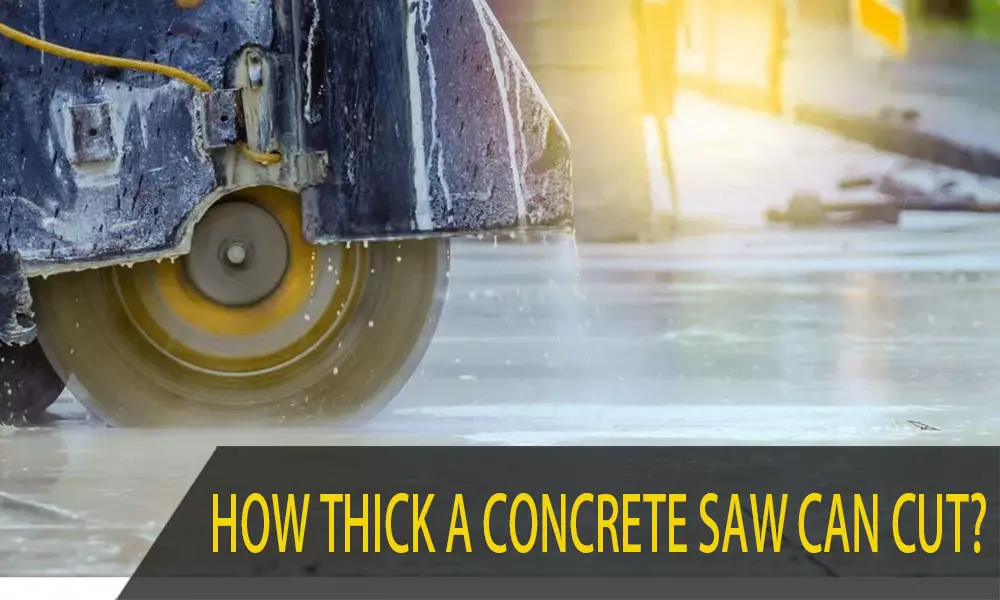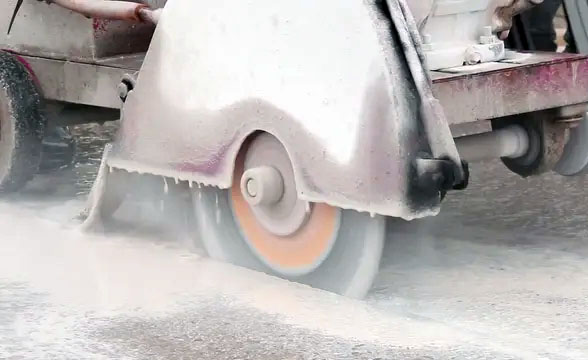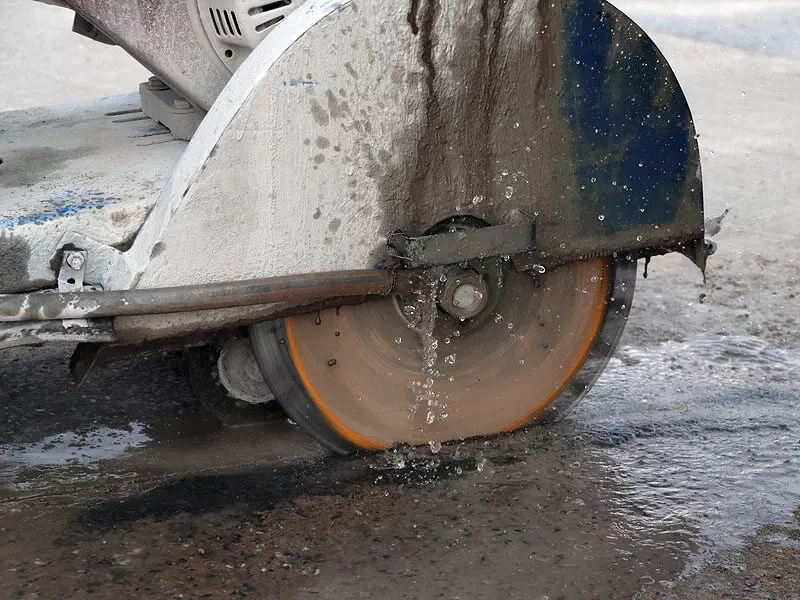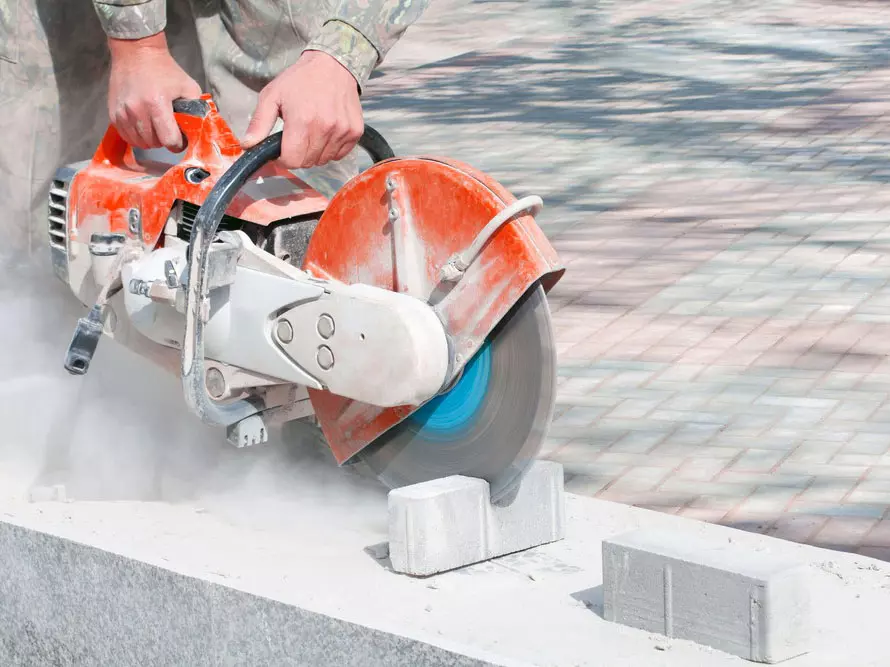06Mar 2024
table of contents
Concrete saws are vital for precise cutting in construction projects, with various types available for different tasks, from handheld concrete saws to large push concrete saws.And understanding cutting depths is crucial for desired results.
In this article, BISON will look at the factors that influence depth of cut these machines can achieve, typical depth of cut for different types of concrete saws. After reading, you will have the do's and don'ts on how to choose the right concrete saw for cutting depth needs and ensure an accurate and efficient cutting job. Let us start journey together, uncover secrets of concrete saw cutting depth, and help your project reach new heights.

handheld concrete saw can cut concrete concrete, stone, masonry and other tough materials. These tools are typically more lightweight and compact compared to push saws, providing an easier usage experience. Making them easier to operate and suitable for smaller projects or areas with limited access.
Handheld concrete saws are commonly used for tasks such as cutting concrete slabs, creating expansion joints, and openings for doors and windows.
Hand push concrete saws are larger, heavier machines, are pushed or driven along the concrete surface.
They are designed for cutting larger areas of concrete such as highways, sidewalks, and floors.
Hand push concrete saws typically have more power, and larger blades than handheld saws, allowing them to cut through thicker, harder concrete surfaces.
Now, let's discuss blade sizes and types:
The diameter of saw blade plays a vital role in determining cutting depth of your concrete saw. Larger diameter blades are able to cut deeper depths, making saw suitable for cutting thick concrete slabs or structures. Hand pushed(walk-behind) concrete saws typically use larger blades to cut thicker concrete slabs, while hand held saws may use smaller blades to make more precise or complex cuts.
It is important to choose correct blade size based on depth of cut required for specific project.
Different types of concrete saw blades designed for different applications and materials. Diamond blades being top preference for durability and effectiveness in concrete cutting. When cutting through robust materials, such as concrete, reinforced concrete, asphalt and masonry. diamond-edged blades encased in a metallic structure outperform others. Opting for a high-grade diamond saw blade guarantees clean, accurate cuts, diminishing the requirement for additional refinement work thereafter.
In essence, factors that influence the depth at which concrete saw can cut include concrete saw's types (whether it's handheld or a push device), along with the dimension and variety of blade utilized. Deeper cuts are generally attainable with bigger blades and stronger saws, whereas the selection of blade type can impact both the precision of the resulting cut.
Handheld concrete saws are general-purpose tools, typically used for smaller cutting tasks and openings.
The typical cutting depth for a handheld concrete saw is usually up to 5 inches.
Ideal for precise and controlled cutting operations in tight spaces, or when portability is required.
Hand push concrete saws are heavy-duty machines, designed to cut larger, thicker concrete surfaces.
Compared to handheld saws, hand push saws have larger blades and more power, allowing for greater cutting depths.
Typical cutting depths for walk behind concrete saws can be 15 inches or more, depending on blade size and machine power.
These saws are commonly used for cutting ditches, roads, and a wide range of other concrete cutting projects.

Wall mounted concrete saws are specialized tools used for vertical cutting applications, such as drilling holes in walls or cutting concrete slabs. To provide precise and controlled cuts along vertical surfaces.
Typical cutting depths for wall-mounted concrete saws vary, but can reach similar depths to handheld saws, usually up to 5 inches.
Also known as panel saws, floor saws are specially designed machines for slicing through horizontal, flat surfaces like walkways and concrete floors. Their heavy-duty blades and potent engines allow for effortless cutting of dense concrete slabs. Typical cutting depths for floor saws range from 6 to 24 inches, or even more, depending on blade size and concrete saw specifications.

By understanding the typical cutting depths of different concrete saw types, you can choose right tool for your specific cutting requirements, and get the best results on your construction project. See the table below for a summary of common cutting depths for various concrete saw types:
| Concrete Saw Type | Typical Cutting Depth Range |
| Hand-held concrete saw | Up to 5 inches |
| Hand push concrete saw(walk-behind concrete saw) | Up to 15 inches |
| Wall-mounted concrete saw | Up to 5 inches |
| Floor sawing machine | 6 to 24 inches or more |
Choose the right concrete saw to meet your project needs, and achieve precision and efficiency in your cutting operations. Read on for more insights on maximizing concrete sawing depth to enhancing construction capabilities. Let's unlock the potential of concrete cutting together!
Choose right blade size: Selecting the appropriate blade size for your concrete saw is essential in order to reach the optimal cutting depth. size of the blade is suitable for your specific saw model and aligns with cutting depth necessary for your project.
Use a high quality diamond saw blade: can improve the overall performance of your concrete saw.
Adjust cutting speed and pressure: Appropriate adjustment of cutting speed and pressure during operation, can help optimize cutting depth capabilities. Maintaining a consistent cutting speed and applying right amount of pressure improves cutting efficiency, and ensures an even cut across entire concrete surface. Avoid rushing cutting process, or apply too much pressure, as this may affect cut quality and the life of blade.
Keep your saw blade sharp: In order to sustain the best possible cutting effectiveness and amplify the depth of cut, it is vital to inspect and hone concrete saw blade. A sharp blade lowers resistance encountered during cutting, enhances precision of the cut, and prolongs the lifespan of the blade. Make sure you promptly substitute blades that have become dull or show signs of wear to guarantee smooth and proficient cutting procedures.
Plan your cut carefully: Planning your cutting operation beforehand can help maximize depth capabilities of concrete saw. When planning your cut, consider factors such as the type of concrete material, existing rebar, and required depth of cut. Accurately marking cutting lines and following correct cutting techniques can increase efficiency and accuracy of cutting tasks.
Ensure proper saw maintenance: Regular maintenance of concrete saw is essential to maximize its cutting depth capabilities and extend its lifespan. Keep your saw clean, lubricated, and well-maintained to ensure smooth operation, optimal cutting performance. Inspect and replace worn parts as needed to prevent performance issues, could affect cutting depth and overall efficiency.
By incorporating these tips into your concrete cutting practice, you can effectively maximize your saw's depth capabilities, and achieve superior results on your cutting projects. Remember to prioritize safety measures, follow manufacturer guidelines, and seek professional help when needed to ensure your concrete cutting job is successful and efficient. With proper technique and maintenance, you can unlock the full potential of concrete saw, and enhance your construction results.

In this article, we explore the depth of concrete saw cuts and discuss the factors that influence the cutting depth of these powerful machines. We stress the importance of choosing the right concrete saw type, blade size and blade type to maximize cutting depth capabilities. By understanding these factors and following tips, you can improve cutting efficiency, accuracy, and overall project success.
It is highly recommended to consult with a professional concrete cutting expert to evaluate specific project requirements and determine the most appropriate saw and blade combination. Their expertise can help you make informed decisions and achieve the best results from your concrete cutting jobs.
For quality concrete saws, we recommend BISON as your professional concrete saw supplier. BISON has a wide range of high quality concrete saw blades and diamond saw blades that provide superior performance and durability for all your cutting needs. Contact us today to explore our products and enhance your cutting experience!
inquiry form here
BISON BLOG, All the latest news and views from Bison Machinery.